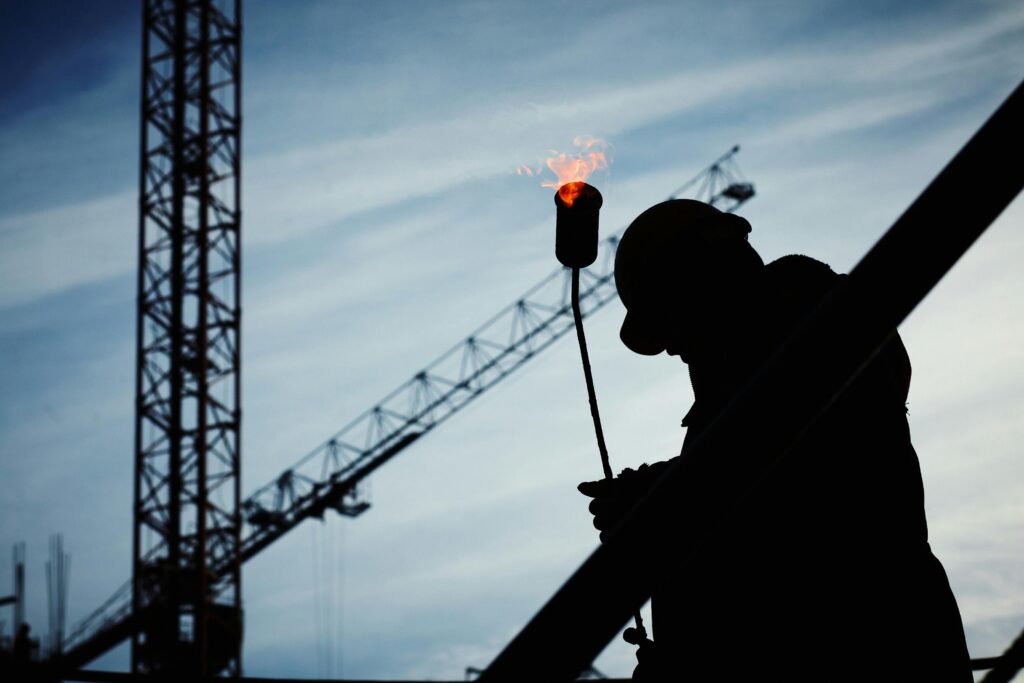
Magnesium Welding Rods Health Hazards
Such intrinsic properties of magnesium, which are problematic and dangerous while utilizing rods of welding, are having very light strength with extreme reactivity. It simply points out the fact that due to this material being an extremely reactive one, there might be some threat posed towards magnesium while it is utilized in the process of welding operation. Having the above information regarding health hazards and safety precautions, the welding or other employees at work can be provided with safe conditions. This paper has outlined issues in risk, effect due to exposure, health risks, and safety when using magnesium welding rods.
- Know Your Magnesium in Welding
Magnesium alloys are used in any field wherein at least a minimum weight possible a maximum strength property is needed, and hence they are used in aerospace, automobiles, and also in the electronics industries. Magnesium alloy-based welding rods are used for the joining or repairing of the magnesium alloy parts. This is one dangerous situation, especially to welding of magnesium-that the properties of reactivity that metal itself and the products developed during the molten as well as the welding process can be dangerous to humans.
It would emit release in some higher intensities of UV lights and possibly even in damaging fumes that would create much respiratory hazard after being ignited by the bright flame of welding, brought about by a burning fire. This would particularly be one of the pulmonary risks of etiologies related to magnesium due to its potential etiologies with magnesium oxide being part of the critical involved factors in this health condition 2: Health risks magnesium weld pose.
2.1 Pulmonary hazards: Excretion with ingestion from Inhalation by Mg2oxides
Fumes are produced mainly due to welding and are composed of magnesium oxides. Magnesium readily oxidizes in an atmospheric condition at a very high temperature. As magnesium oxide particles, they are released into the air and may easily be inhaled. Thus, respiratory diseases of all ranges, from mild irritation up to grave disorders, can be induced.
The particulates of magnesium oxide inhalation are dangerous because they cause irritation in the tract. Such irritants normally cause inflammation once they settle down into the lungs but repeated exposure and extreme exposure might bring long-term lung diseases. Such fumes get worsened upon hitting the patients of asthma or COPD.
Concentration of metal oxide creates a temporary condition known as metal fume fever. Symptoms are flu-like chills, fever, nausea, headache, muscular ache, and fatigue. Symptoms from the disease can occur within hours of exposure and usually also are self-limiting within 24 to 48 hours. While typically being an illness of relatively short duration, repeated exposures sometimes trigger more serious illnesses, resulting in many times as many chronic respiratory diseases.
B. Chemical Hazards: Ozone and Nitrogen Oxides
Along with the magnesium oxide emitted into the atmosphere from the welding, a flammable and deadly fume called ozone is formed. It so happens to be very aggressive. The human lung and the airways get so irritable that one gets chest pains and cannot breathe smoothly. Other chemicals that are likely to be produced as a result of high-temperature welding are nitrogen oxides. These also produce respiratory effects because they are irritants of the system. It can advance into chronic respiratory disease or expose the patient to one form of malignant growth if it is left for a period of extended time duration.
Ozone Exposure: Extremely low concentration caused damage in lung tissues and dysfunction in lungs. Since the welders have no ventilation when working with high concentrations of ozone, they breathe uncontrollably through the nose or mouth.
Nitrogen oxides: These are the oxides of the nitrogen that penetrate into the atmosphere by using extremely high temperatures. That emerges from the reaction of free nitrogen in the atmosphere, which uses free oxygen. Nitrogen oxides provoke irritation that leads to resulting in respiratory disease. While infected, one tends to cough and wheezes; they induce chronic diseases in more distant ranges within ranges of the lung area.
The potential dangers to the eyes and the skin
It is heavily associated with extreme risks that either the eye or even a skin risk may incur when there are high UV rays. With magnesium welding, such a risk is through high bright white flames raised such burns.
Welder’s Flash or Photokeratitis: It results in a painful welder’s flash or photokeratitis, a sunburn of the eye with symptoms of tearing, pain and transient loss of vision because of the ultraviolet light emitted by the magnesium welding. All the foregoing symptoms are self-limiting and settle in twenty four hours or forty eight hours but repeated exposure damages the eye permanently.
The high temperature of the welding arc produces ultraviolet radiations that are emitted and cause sunburn in the skin. That can be the largest hazard because if the metal that is being welded happens to be magnesium, then even high temperatures burn the metal itself also, creating sparks, and without protective coverings, the welder is going to face severe and also potential chronic conditions.
Fire Explosion Hazards
Again, another harmful characteristic of magnesium is that it is inflammable. Magnesium burns very bright and mostly if magnesium catches fire nothing can put out that. Powder dust, shavings are easily flammable by catching on fire, hence, that one element has wonderful hazards from fire other than the explosive. This becomes quite injurious to any procedure carrying welding where the locality source points for ignition exist naked flames are plenty.

This chemical, if it is diluted, will explode, and it will make big dust in the clouds, in an environment where welding is going on and might and could explode while it receives fire and concurrently endangers some people involved in the process of welding and a few more.
Combate Fire: With magnesium fire, the normal extinguishing agents of the fire that either is water-based or CO2 becomes ineffective but could also be the fire-aggregating agent. D class fire extinguishing agent applies to the fires involving metals and ought thus be applied to magnesium.
Health Hazard with Exposure Duration
Additive effect on health owing to its protracted exposure period involves welding smoke which among many contains;
The risks associated with long exposure include:
There is chronic respiratory disease linked to long-term exposures of chronic magnesium oxide, nitrogen oxides, and ozone which even include lung cancer and emphysema, bronchitis.
As the radiations that occur from the welding arc continue to add up so is the likelihood of having a case of skin cancer since no parts of the body can be covered in this process.
Chronic Eye Disorders: Arc and UV rays would act as cumulative damage for the eyes of the welders unless protection is guaranteed to be ensured. They would suffer from the disease of cataract along with other eye disorders.
- Safety Measures and Good Practices
Strict safety provisions. Good practices as far as health point of views are concerned; they reduce risks, and they keep the welders safe.
A. Ventilation and Fume Extraction
Among all the measures undertaken to ensure a minimum level of preventive measures against exposure of an individual to welding fume proper ventilation has been an ultimate preventative measure. Providing provision to good ventilation by systems using LEV means a possible way of ensuring its reduction at the production sources of fumes.
Fume extraction: A very rare special case and not of adequate proper ventilation sometimes during spot capture on an extraction hood, this occurs.
Natural and Forcing Ventilation: If LEV is not possible to be applied, welding workers can be allowed into rooms that have good airing. It is still preferred that welding workers shall work outdoors or in well ventilated places with excellent ventilation. Such a process will be referred to as Forced ventilation – whereby fumes from working space of the operators get dispersed using fans.
B. Respiratory Protection
Ventilation alone does not help reduce inhalation exposure if respirators are necessary for supply. For example, when doing magnesium welding, the respirator shall be a NIOSH-approved particulate filter and can be labeled as N95, or a P100.
Respirators Full face and half-face respirators along with their filters shall be used if ventilation proper is not available and the task is of protracted nature.
Fit Testing: Welders should know that the respirators should fit correctly so that they do not leak. Every welder requires a respirator fit test sometimes so that the respirator fits correctly.
C. PPE
PPE will prevent exposure of the welder in the eyes, skin, or respiration. The fundamental PPE for general magnesium welding will include:
Helmet carrying high rated UV intense light filter lenses which would provide cover for face, neck or eyes to ultraviolet and infrared radiations
Dress Flame-proof : since ignition temperature of Magnesium is too high so that dresses has to be flae -proof; so alternative like leather jacket,leather apron for neck area and leather hand gloves would be applicable for this task.
Glasses: Except for the helmet, there is a need to have a glass covering the face in case stray sparks or the minute particles penetrate through the helmet.
D. Fire extinguishing measures
Magnesium fires ought not to be ignited and must not be permitted to spread; hence, fire precautionary measures shall become a necessity.
Fire extinguishers Class D are for metal fires and not water or CO2 extinguishers which can raise the flames in a magnesium fire.
Workshop Cleanliness: The magnesium powder and scrapings in the workshop shall never be permitted to lie around; it may even prove to become an excellent source of risk against fire and explosion.
E. Training and Safety Procedures
This would be worker training who would otherwise see exposure to magnesium welding. So, such workers are more informed and risk aware plus controlling the risk.
Hazard Knowledge: in the context, the welders are made aware of signs or consequences resulting from inhaling hazards of welding and wearing of PPE.
- Compliance and Workplace Standards
This brought the responsibility of exposure limits for the fumes from dangerous by-products of welding, such as magnesium oxide, on OSHA bodies. The employer will be liable to have regular air quality analysis to estimate concentration levels within a working area and ensure proper PPE and safe conditions to work.
This checks for air giving a guarantee of the nonexistence of concentrations of fumes within set limits of exposure and hence preventing any occurrence of long-term effects. Scheduled Health Check-ups: The exposed chemical substance workers should be scheduled for check-ups in search for the early signs.

